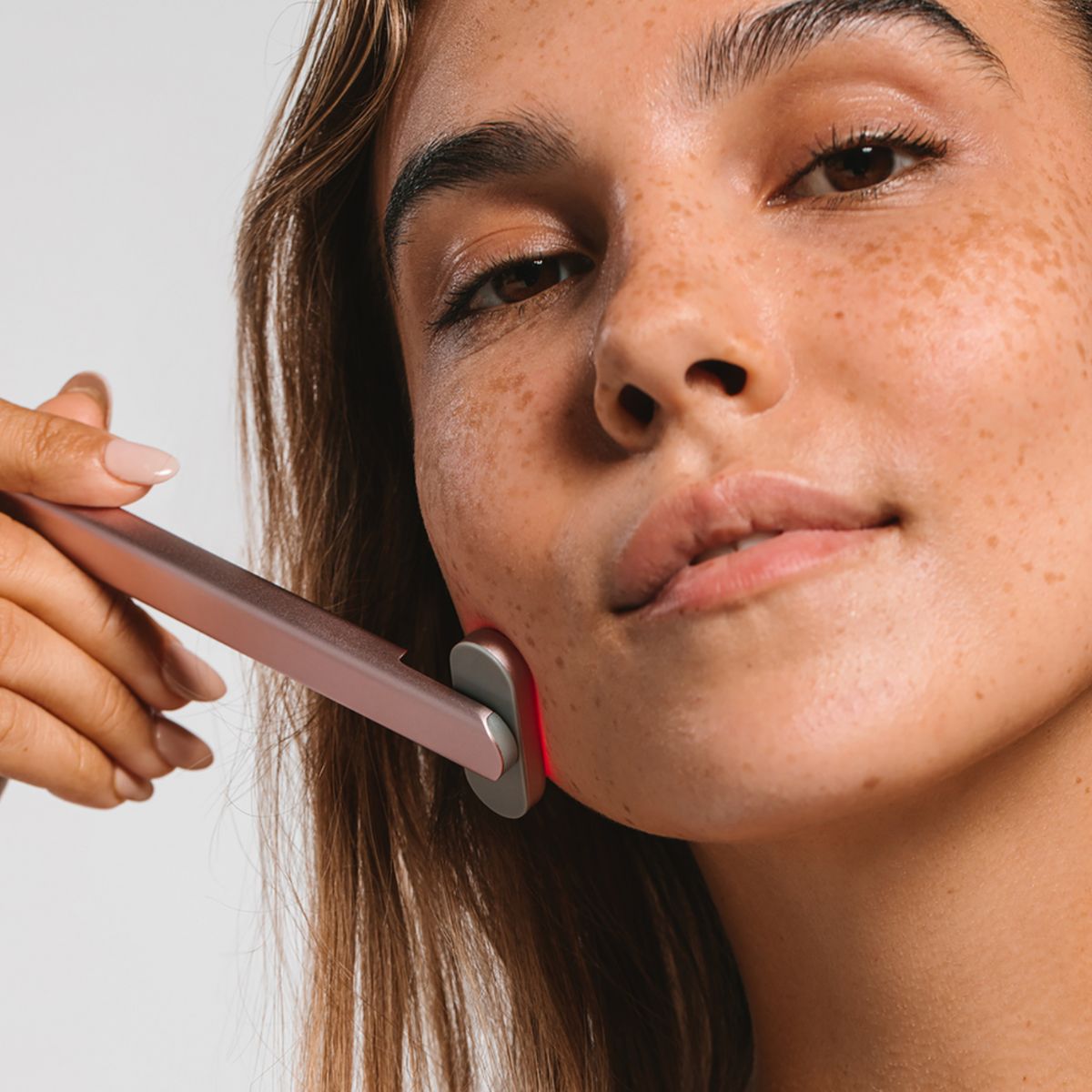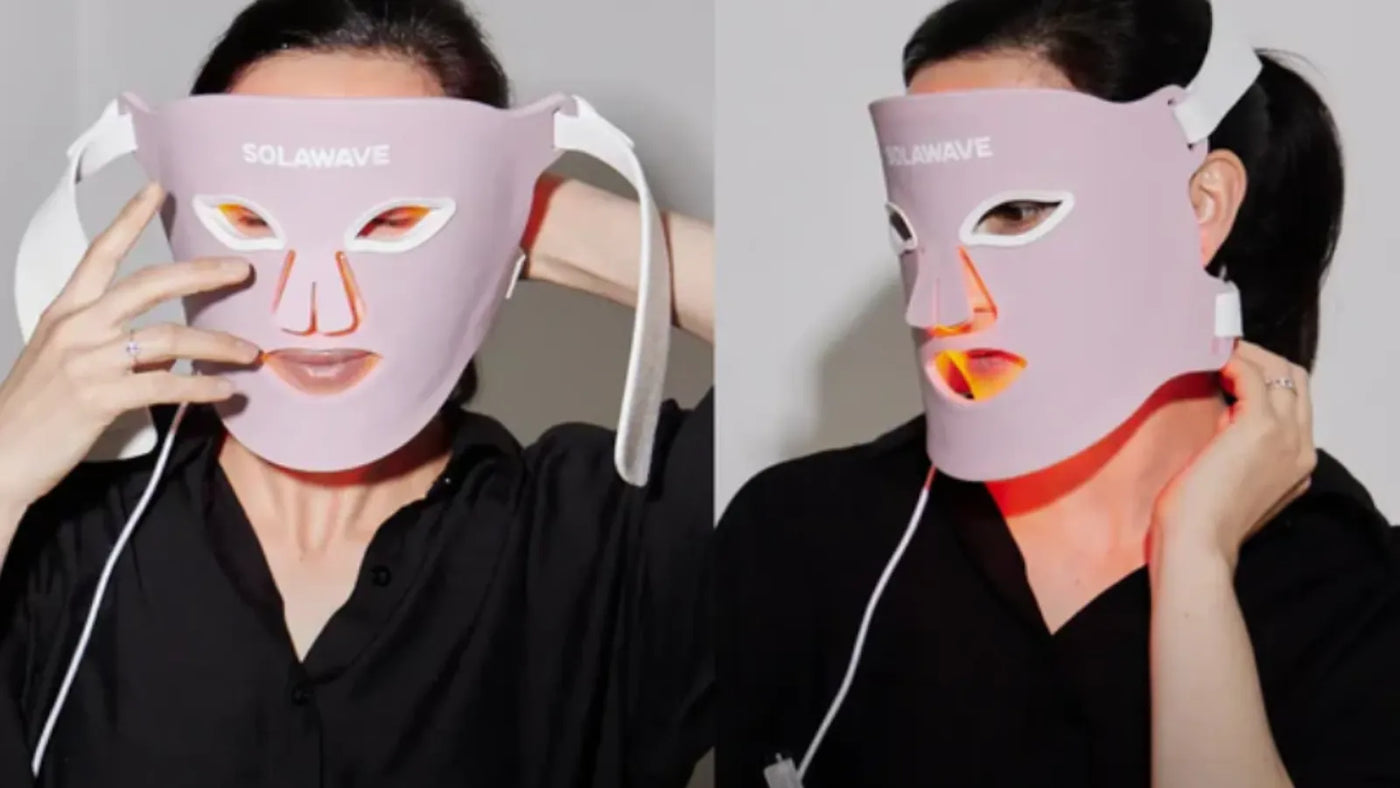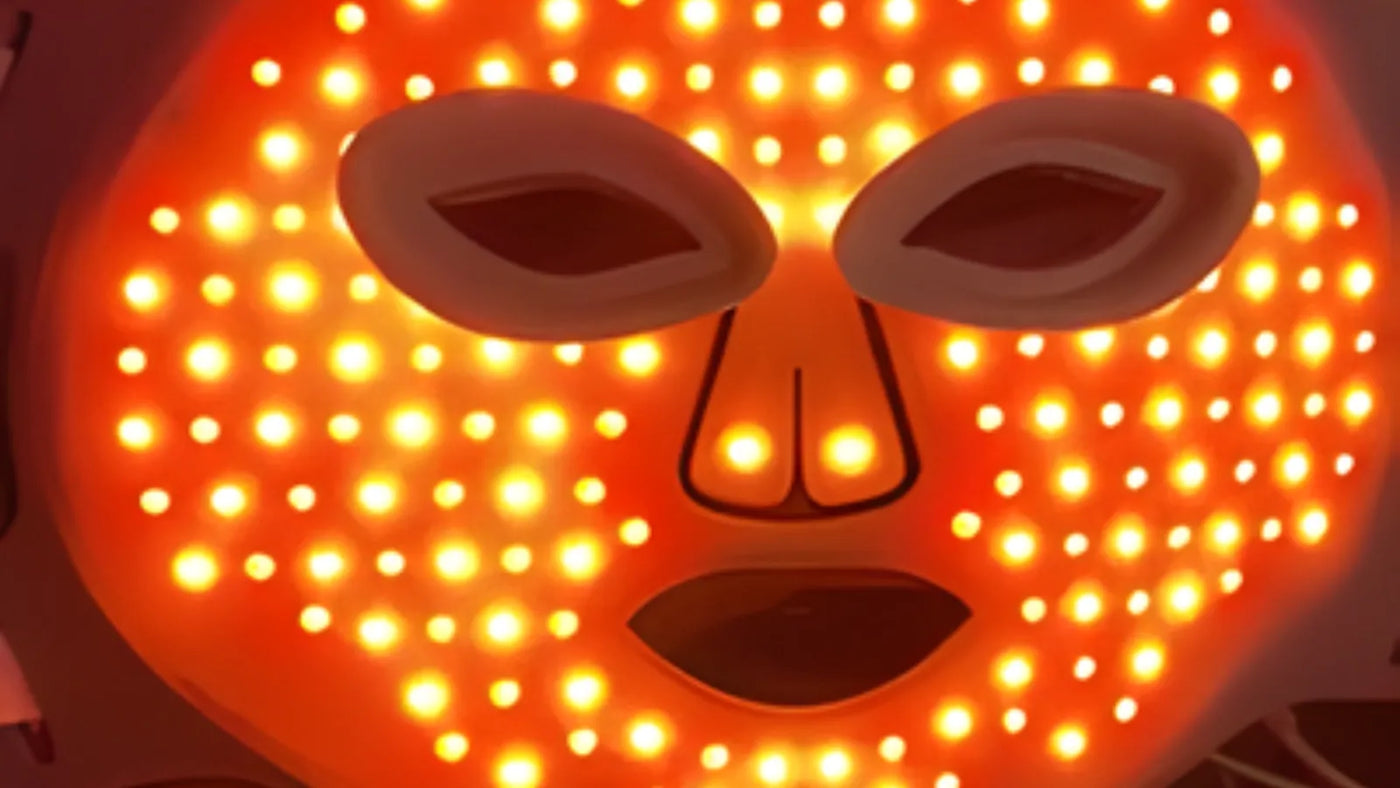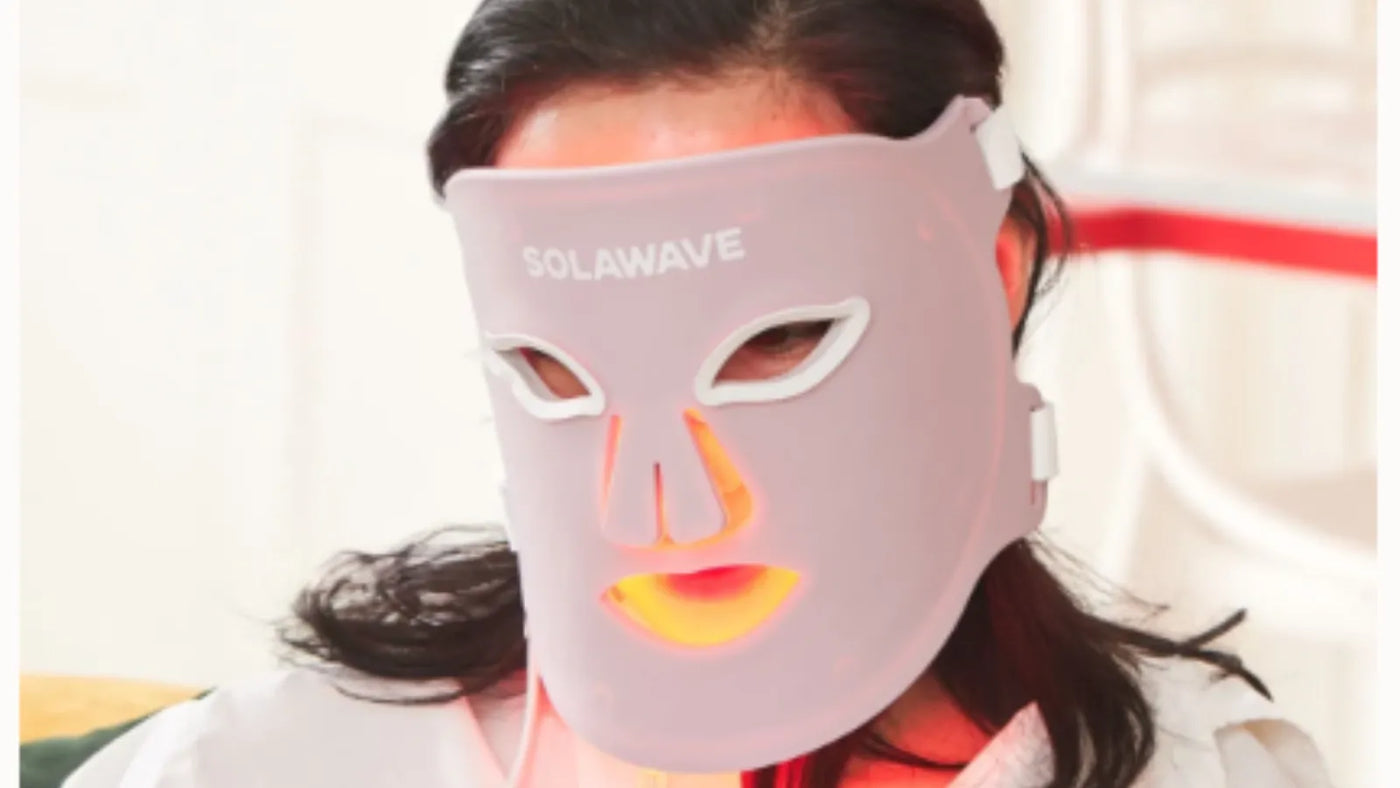

How Does Red Light Therapy Improve Skin Elasticity
Skin elasticity plays a big role in how fresh and healthy our skin looks, affecting everything from the appearance of fine lines to how plump and reenergized our skin feels. As we age, it’s natural for skin to lose some of its bounce, leading many to seek out solutions that help restore a firmer, more luminous look. In this article, we’ll dive into what skin elasticity really means, why it matters, and how Red Light Therapy can help you achieve healthier-looking, more resilient skin.
What is Red Light Therapy?
Red Light Therapy (RLT) is a non-invasive skincare technique that employs low levels of red and near-infrared light. Unlike potentially harmful UV light, RLT is thought to enhance cellular function by boosting mitochondrial activity, the "powerhouses" of our cells, resulting in increased energy production. This surge in cellular energy helps support natural skin rejuvenation. An increasing number of people are choosing Red Light Therapy for its potential to enhance the appearance of skin and to ease muscle soreness or inflammation.
What Are the Benefits of Red Light Therapy for Skin?
-
Reduced Wrinkles and Fine Lines: Red Light Therapy helps minimize the appearance of wrinkles and fine lines by supporting healthy collagen production, resulting in smoother-looking skin.
-
Improved Skin Tone and Texture: Regular RLT use helps promote a more even skin complexion and visibly smoother texture by encouraging cell turnover and reducing inflammation.
-
Reduced Redness and Inflammation: RLT’s soothing effects can help calm irritated skin, reduce redness, and alleviate overall skin sensitivity.
-
Enhanced Wound Healing: By promoting blood flow and cellular repair, RLT can help improve healing for minor cuts or zits.
-
Increased Collagen Density: Red Light Therapy works to boost fibroblast activity, aiding in the creation of stronger skin support structures.
How Does Red Light Therapy Improve Skin Elasticity?
Red Light Therapy helps enhance skin elasticity by stimulating fibroblasts in the deeper layer of the skin. These fibroblasts are key to producing collagen and elastin, the proteins that maintain skin's structural integrity and flexibility. As collagen and elastin naturally decline with age, skin can start to look less firm and lose some of its natural bounce, leading to more visible fine lines and a less resilient feel. RLT revitalizes fibroblast efficiency, leading to enhanced protein production and promoting the restoration of skin’s firmness and resilience.
Can You Effectively Use Red Light Therapy at Home for Skin Firmness?
Yes, at-home devices make it easy to experience the benefits of Red Light Therapy, especially when used regularly. Options like LED masks, panels, and handheld devices are widely available, but it’s important to choose a high-quality device that delivers wavelengths in the 630–660nm range for Red Light or 850nm for Near-Infrared Light. Following the manufacturer’s guidelines and sticking to a consistent routine can help you achieve firmer, healthier-looking skin over time. While professional treatments may offer a higher intensity, at-home Red Light Therapy devices let you easily upgrade your skincare routine from the comfort of home.
How Does Red Light Therapy Compare to Other Skin Elasticity Treatments?
Red Light Therapy provides a gentle, non-invasive way to support skin elasticity, with little to no downtime required. Unlike laser resurfacing or chemical peels, which treat the skin’s surface and can sometimes cause irritation, RLT helps improve the look of skin without discomfort or visible damage. Retinoids are often used to support healthy collagen, but they can sometimes cause dryness or sensitivity. Microneedling is another popular option, though it may involve some discomfort and a period of recovery. With its gradual, noticeable benefits, Red Light Therapy is a flexible choice, whether you use it alone or as part of a complete skincare routine.
What is the Biological Mechanism Behind Red Light Therapy's Effect on Skin?
The mechanism behind Red Light Therapy’s skincare benefits lies in the absorption of light by chromophores, such as cytochrome c oxidase in mitochondria. This process, known as photobiomodulation, converts light energy into chemical energy, boosting ATP production. Elevated ATP levels fuel collagen and elastin synthesis by fibroblasts while also reducing oxidative stress and inflammation. Though RLT doesn't directly produce collagen, it provides the energy and environment needed for the skin to strengthen itself naturally, leading to improved elasticity and vitality.
How Does Red Light Therapy Stimulate Collagen Production?
Red Light Therapy promotes collagen production by targeting fibroblasts at the cellular level. When red or near-infrared wavelengths penetrate the skin, they are absorbed by mitochondria, which triggers a series of biochemical changes, ultimately increasing ATP (adenosine triphosphate), the primary energy source for cells. With greater energy, fibroblasts can produce more collagen and optimize its quality. This added collagen reinforces the skin's structure, leading to improved elasticity and a reduction in visible signs of aging.
What Factors Influence Red Light Therapy’s Effectiveness on Skin?
Several factors can shape how well Red Light Therapy works for your skin. The device’s wavelength and light intensity (irradiance) are key: wavelengths in the 630–660nm range for Red Light and 850nm for Near-Infrared Light tend to deliver the best results. Consistency is also important; regular sessions over several weeks are needed to see visible changes. Your skin type, age, and overall wellness can influence your results, as can the quality and safety of the device you choose. For the best outcome, pair your Red Light Therapy routine with healthy habits like staying hydrated, eating nourishing foods, and protecting your skin from the sun.
Best Red Light Therapy Devices to Improve Skin Elasticity
If you’re looking to support firmer, more resilient skin at home, these standout Red Light Therapy devices offer targeted solutions for different areas of your face. Each device is designed to help visibly improve skin elasticity and deliver a refreshed, healthier-looking complexion.
Radiant Renewal Skincare Wand & LightBoost Set
The Radiant Renewal Skincare Wand & LightBoost Set is a portable, 4-in-1 device that combines Red Light Therapy (630nm), Therapeutic Warmth, Galvanic Current, and Facial Massage. This award-winning wand is designed for targeted use on areas like smile lines, under eyes, and the jawline. The Red Light Therapy feature helps visibly improve firmness and smooth the look of fine lines over time, while the included LightBoost™ Activating Serum enhances the effects of each session. With regular use, you can expect your skin to look more lifted, refreshed, and radiant, making it a great choice for anyone wanting to boost skin elasticity in specific areas.
Wrinkle Retreat Light Therapy Face Mask
The Wrinkle Retreat Light Therapy Face Mask offers full-face coverage with a comfortable, hands-free design. This FDA-cleared mask uses both Red Light (630nm) and Near-Infrared Light (830nm) to help visibly firm skin, smooth fine lines, and even out skin tone. The dual-wavelength technology targets the deeper layers of skin, supporting healthy collagen and improving elasticity across your entire face. Paired with the LightBoost™ Face & Neck Serum, this mask is ideal for those who want a spa-like experience at home and are looking for overall improvement in skin firmness and resilience.
Red Light Therapy Eye Mask LightBoost Set
For the delicate eye area, the Red Light Therapy Eye Mask LightBoost Set is specially designed to address common concerns like crow’s feet, puffiness, and loss of firmness. This FDA-cleared mask uses four wavelengths: Amber (605nm), Red (630nm), Deep Red (660nm), and Near-Infrared (880nm), to target signs of aging and fatigue around the eyes. The LightBoost™ Eye Cream included in the set helps hydrate and visibly firm the skin, enhancing the effects of the light therapy. With just three minutes per session, this device helps the skin around your eyes appear brighter, smoother, and more resilient.
What Are the Potential Side Effects of Red Light Therapy for Skin?
Ignoring Protective Eyewear
Not wearing protective eyewear during RLT can strain your eyes or potentially harm them. Always use the safety glasses provided with your device.
Using Incorrect Wavelengths
Devices emitting wavelengths outside the recommended 630–660nm (red light) and 850nm (near-infrared) range may fail to deliver benefits and could irritate your skin. Ensure your device aligns with these specifications.
Inconsistent Treatment Schedules
Sporadic use of RLT limits its results. Follow the schedule recommended by your device’s manufacturer to achieve the most significant improvements.
Overexposure to Red Light
Exceeding recommended treatment durations can cause redness or photosensitivity. Stick to safe exposure times for optimal results.
Using RLT on Compromised Skin
Applying RLT to damaged or irritated skin can worsen its condition. Ensure your skin is healthy and undamaged before beginning treatments.
How Long Does It Take for Red Light Therapy to Tighten Skin?
The timeline for seeing firmer, healthier-looking skin with Red Light Therapy can vary from person to person. Most people begin to notice subtle improvements in skin’s firmness and texture after about four to six weeks of consistent use. For best results, it’s important to follow a regular routine, such as using your device several times a week as recommended by the manufacturer. Over time, continued sessions can lead to more visible changes, with many users experiencing a refreshed, more resilient look after two to three months. Keep in mind that factors like your age, skin type, and overall skincare habits can all influence how quickly you see results. Patience and consistency are key to enjoying the full benefits of Red Light Therapy.
Does Red Light Therapy Increase Elastin?
Red Light Therapy does not directly increase elastin, but it helps create an environment where your skin can naturally support its own structure. By boosting cellular energy and supporting healthy collagen production, Red Light Therapy can improve the look of skin’s firmness and resilience. While elastin is important for skin’s stretch and bounce, the main benefit of Red Light Therapy is its ability to help skin appear smoother, firmer, and more refreshed.
What Light Is Best for Skin Tightening?
For skin tightening, Deep Red Light Therapy (wavelengths between 630–660nm) and Near-Infrared Light Therapy (around 850nm) are considered the most effective. These wavelengths penetrate the skin at different depths, supporting healthy collagen and helping skin look firmer and more luminous. Choosing a high-quality device that emits light in these ranges can help you achieve the best results for a visibly tighter, healthier-looking complexion.
Can You Overdo Red Light Therapy?
While Red Light Therapy is gentle and non-invasive, it’s still possible to overuse it. Using your device more often or for longer than recommended won’t speed up results and may cause temporary redness or irritation. For the best outcome, always follow the manufacturer’s guidelines and give your skin time to respond between sessions. Consistency, rather than excess, is key to enjoying the benefits of Red Light Therapy safely and effectively.
Pairing Red Light Therapy with daily sun protection, hydration, and strategies to minimize sun damage helps you build a foundation for radiant, healthier-looking skin now and in the future. Explore our full skin rejuvenation therapy collection here.
Sources:
-
Light-Emitting Diodes (LEDs) in Dermatology | National Center for Biotechnology Information (NCBI)
-
Photobiomodulation and Skin Rejuvenation | National Center for Biotechnology Information (NCBI)
-
Aging and the Decline of Collagen and Elastin | National Center for Biotechnology Information (NCBI)
-
Microneedling: Mechanisms and Benefits | National Center for Biotechnology Information (NCBI)






















